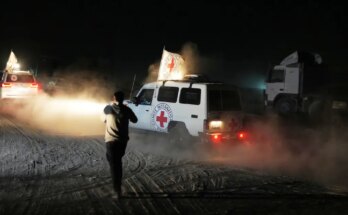The “measles-free region” status for the Americas, which until a few days ago was the only continent in the world to have it, has been severed. The Pan American Health Organization (PAHO) announced late Monday that the region lost that certificate after Canada failed to stop sustained transmission of the virus before completing 12 months of circulation. The withdrawal of this certificate is reversible if vaccination, surveillance and rapid response are strengthened.
In Mexico, the epidemic has become the center of attention as more than 5,000 cases have been reported in 27 states, with a higher incidence in northern entities – especially in Chihuahua – where community transmission remains active.
Cases in Mexico
As of November 12, according to the Mexico Measles Outbreak Daily Report, 5,252 cumulative cases have been reported in the country, 11 of which were recorded in the past 24 hours. The most affected states are Chihuahua (4,440 accumulated confirmed cases), Jalisco (186), Michoacán (150), Guerrero (128) and Sonora (102).
However, authorities estimate that in Jalisco there could be up to 945 accumulated probable cases, and in Mexico City a similar scenario with 827.
In total, the government reported the deaths of 23 people, 21 of them in Chihuahua. On November 10, the government of Jalisco reported the death of an 11-month-old child from Guerrero, who suffered from malnutrition and had contracted the disease.
Symptoms
Measles is a highly contagious viral disease caused by a morbillivirusaccording to the World Health Organization (WHO). After contact with the virus, symptoms usually appear seven to fourteen days later and are as follows:
- high fever;
- cough;
- rhinorrhea;
- red, watery eyes;
- and the appearance of small white spots on the inside of the cheeks, known as “Koplik spots.”
Although many people recover within a couple of weeks, measles can have serious consequences. It can cause pneumonia, encephalitis, severe diarrhea, ear infections, vision loss and even death, PAHO warns. According to the Centers for Disease Control and Prevention (CDC), the most vulnerable are infants and children, adults over the age of twenty, pregnant women and people with weakened immune systems.
The virus is transmitted through the air, through droplets expelled when you cough or sneeze, and in closed spaces it can easily infect almost all non-immunized people.
Who should be vaccinated?
In Mexico, the current vaccination program includes two doses of the MMR triple viral vaccine (measles, rubella and mumps) for all children under 10 years of age.
The Ministry of Health has launched an urgent appeal for vaccination:
Is it necessary to be vaccinated against measles?
What year were you born?
You probably got measles naturally.
It is not necessary to get vaccinated
Have you had measles?
It is not necessary to get vaccinated
No or you don’t know
Have they vaccinated you?
It is not necessary to get vaccinated
Have you had measles?
You probably don’t need to get vaccinated.
No or you don’t know
Have you received 2 doses of the MMR vaccine?
It is not necessary to get vaccinated
You probably already have the full schedule if you were vaccinated as a child
Check your card or go to your health center



